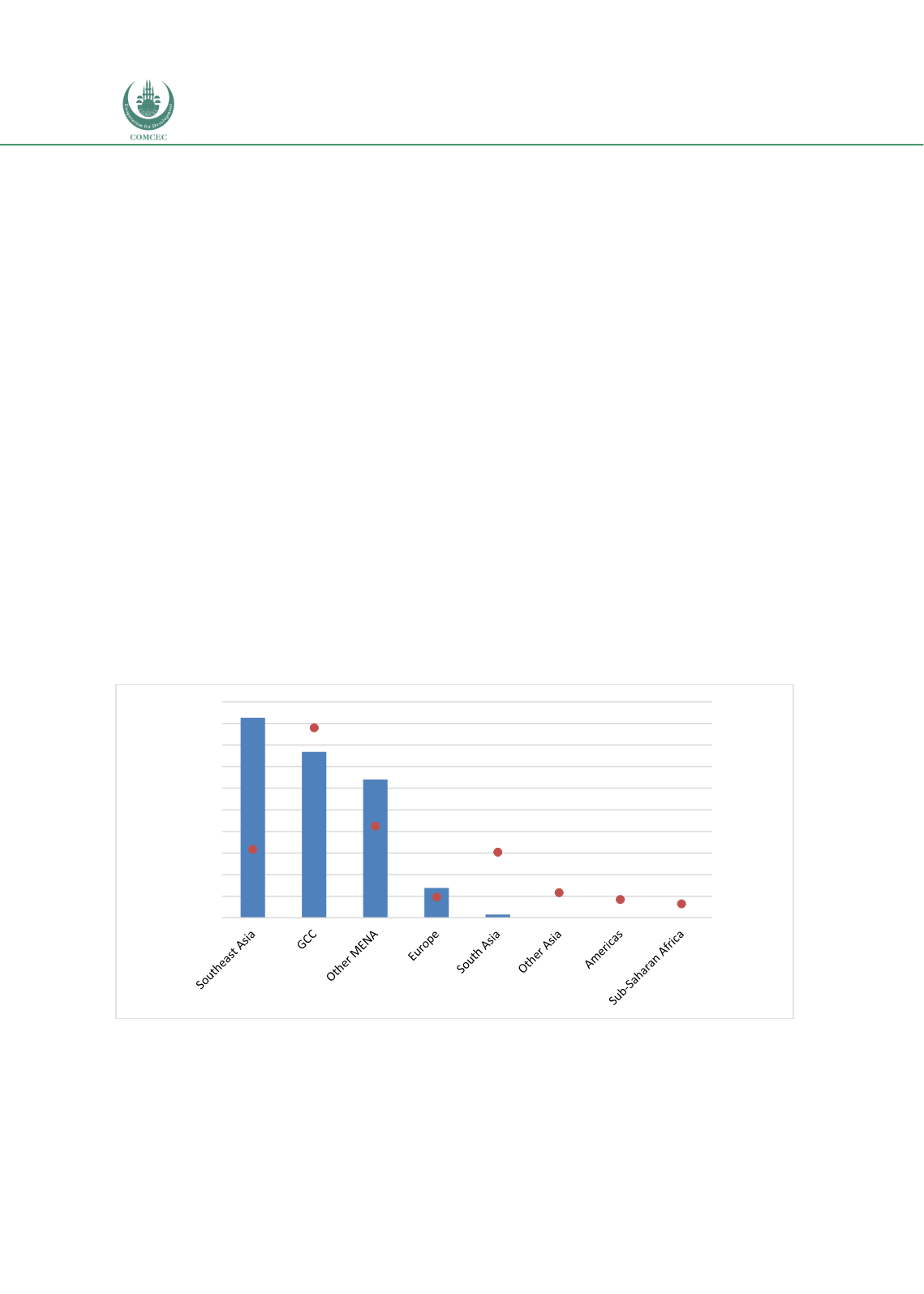

Infrastructure Financing through Islamic
Finance in the Islamic Countries
64
Challenges and Prospects
Given the issues related to illiquid assets and capital requirements related to direct long-term
investments by financial institutions, a better way to raise funds for investment projects is to
use the capital markets. Since debt-based sukuk cannot be sold, it would be desirable to issue
asset-based and equity-based project sukuk. Issuing these kinds of sukuk not only reflects the
risk-sharing features of Islamic finance but will also enhance the liquidity features of the
securities that will attract investments from Islamic financial institutions in infrastructure
projects. However, the data shows that the Islamic capital markets are relatively small and
underdeveloped in many OIC countries relative to the Islamic banking sector. To increase the
role of Islamic finance in infrastructure investments would, therefore, require developing the
Islamic capital markets.
3.7.
Islamic Nonbank Financial Institutions
The nonbank financial institutions (NBFIs) such as
takaful
(Islamic insurance), pension funds,
investment banks, sovereign wealth funds, etc. form another potential source of funds for
infrastructure investments. However, the size of other Islamic financial institutions (OIFIs) and
the takaful sector is relatively small. Charts 3.17 and 3.18 show the relative sizes of these
sectors in different regions. Of the total of 571 OIFIs in the world, 220 OIFIs are located in the
GCC with assets worth USD 38.419 billion and 79 OIFIs in Southeast Asia have assets valued at
USD 46.319 billion. The numbers indicate that the assets of an average size OIFI in Southeast
Asia (USD 586.3 million) is larger than one in the GCC with an average size of USD 172.6
million.
Chart 3.17: Distribution of OIFIs and Assets (USD million)
Source: ICD & TR (2017)
The distribution of the takaful operators and their assets is shown in Chart 3.18. Most of the
total global 339 takaful companies are located in the GCC with 94 takaful companies having
assets worth USD 18.902 billion. While the Southeast Asia region has 88 takaful operators,
their assets are valued at USD 10.491 billion which is lower than that of the Other MENA
region which has 75 operators with assets of USD 11.591 billion.
46,319
38,419
32,034
6,879
705
42
14
1
79
220
106
24
76
29
21
16
0
50
100
150
200
250
-
5,000
10,000
15,000
20,000
25,000
30,000
35,000
40,000
45,000
50,000
No. of OIFIs
USD (million)
















